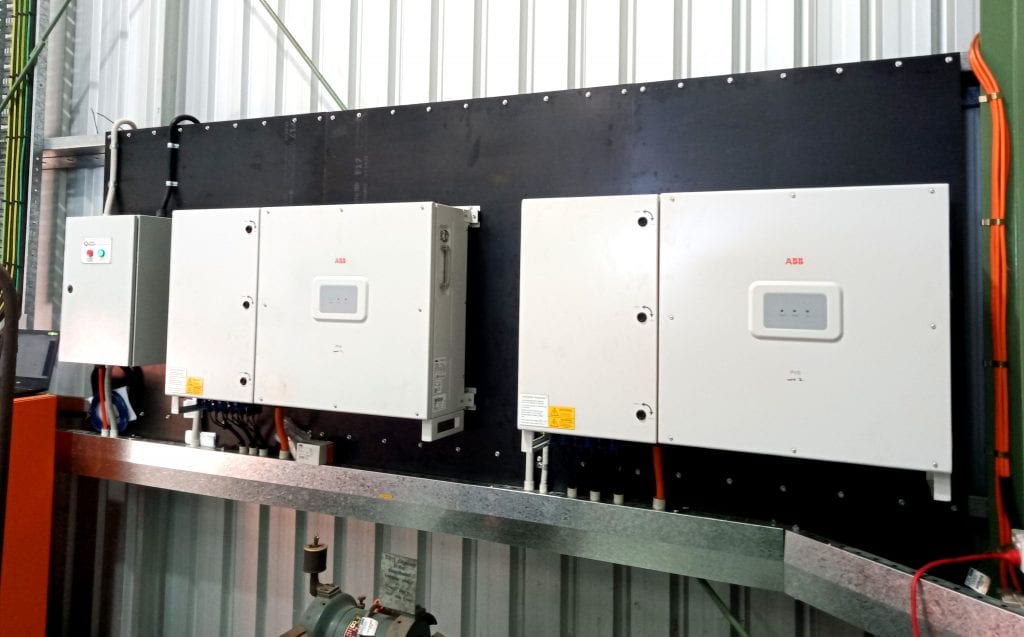Who are FIMER inverters?

FIMER inverters are a lot like Fronius – they started decades ago (1942) making welding equipment, and have since expanded into the energy industry – specifically, battery charging and solar inverters. They’re even neighbours, with Fronius in Austria and FIMER inverters in northern Italy. However, until recently, FIMER only made large industrial-/utilities-level (primarily central) inverters – devices in the hundreds or thousands of kVA, not the 5~10kVA systems your average house needs.
More recently they have made a range of inverters for home and small businesses. Solar veterans will remember these inverters being called Powerone originally. Powerone sold out to ABB in 2017 and then in 2020, FIMER’s acquired ABB’s solar inverter division. So, they have had a few different brands and names to keep up with over the years!
ABB is a Swiss-Swedish company, with headquarters in Zurich, Switzerland. It originated as two companies – one formed in 1883 (Allmänna Svenska Elektriska Aktiebolaget [ASEA], by Ludvig Fredholm – the Swedish company), and the other formed in 1891 (Brown, Boveri & Cie, by Charles Eugene Lancelot Brown and Walter Boveri – the Swiss company). These merged in 1987 to make ABB – yes, it stands for ASEA Brown Boveri. ABB, a Fortune Global 500 company, makes a huge range of electrical and electronic goods – from motors to circuit breakers to robots to PLCs.
Click here for our video showing 10-things to consider before buying a solar inverter
Going back further, as mentioned, ABB got into the solar inverter market in 2004 by acquiring Power-One. Power-One was an Italian company, formed in 1973, who was seen as making some of the best inverters available at the time. Regardless of parent company, the inverters have always been made in Italy – not China.
FIMER have taken over ABB’s entire business unit, meaning nothing really changes – the inverters are currently being made by the same people in the same factories.
FIMER have offices in NSW (tech support) and VIC (sales).
There are pros and cons of every inverter brand to consider.
What do they do?
FIMER make a huge range of inverters, for every situation. Their smallest in their inverter range is a 1.2kW single phase string inverter, suitable for only 4~5 solar panels! Yet they also go up to solar-farm/industrial levels – their largest is a central inverter that allows up to ~5MW, which is 15~18,000 solar panels!!
At GI Energy, we primarily use their commercial inverters; that is, three-phase, from 20 to 100kW (specifically, 20kW, 27.6kW, 50kW and 100kW). Compared with Fronius, they offer greater flexibility than the Fronius Ecos (2~6 MPPTs, compared to the Eco’s 1), and lower prices than the Fronius Symos. Furthermore, currently Fronius’ largest inverter is the Eco 27kW (with the 50kW and 100kW Tauro coming soon), so, for a 100kW system, you would need three Eco 27s, where alternately you could use a single ABB 100 (or two 50s linked together).

We also use them for smaller residential jobs, especially the FIMER UNO DM (available in 1.2kW, 2kW, 3.0kW, 3.3kW, 4kW, 4.6kW, 5kW, and 6kW). They’re a bit cheaper than the Fronius, but more expensive than the Sungrow.
SMA have recently been boasting about their ShadeFix technology, which finds the absolute maximum power point. A system may have multiple relative maximums, but it will only have a single absolute maximum – the maximum maximum, which is the one you want. Cheaper inverters will be happy to find a relative one, and stop looking after that. Fronius also have the technology to find the absolutely maximum, which they call Superflex. What most people don’t know is that ABB have had this technology since 2011!

The image above shows the most popular string inverters we install. From left to right: Sungrow, Fronius FIMER and SMA.
Monitoring
As with other inverters, FIMER have Wi-Fi monitoring built in to their inverters, which connects to an online platform – in this case called Aurora Vision. This can be combined with an energy meter to monitor real-time consumption on top of the production, both from a computer or a device via an app. This is something FIMER are actively working on – they’ve recently released a new smart meter with added functions, and they have plans to redesign their app in the near future.
Interestingly, ABB also have weather stations and irradiance sensors that can be connected to Aurora Vision to compare the definite output with that predicted based on the actual weather conditions. Many monitoring solutions, including Solar Analytics, have predicted production based on BOM weather data – but what better than having an actual weather station next to your array! It’s not cheap, but for a big commercial project it’s definitely worth considering.

Warranty
FIMER inverters currently have a 10-year warranty on all their residential inverters, and five year on their commercial ones. And unlike other smaller or younger manufacturers, there’s no doubt FIMER – an almost 80-year-old company – will be unable to honour their warranty.
Are FIMER inverters any good?
FIMER offer a European made inverter that is cheaper than Fronius and SMA, but more expensive than Sungrow, which is typically considered the best Chinese made inverter available. For a typical 6.6kW home solar system a Fronius inverter will set you back about $350 more than FIMER. Obviously with the bigger systems, the price difference is higher so if you wanted a single phase 13.3kW system for your home, the cost difference would then be $700 as you need two of the 5kW FIMER Uno’s.
If big, safe companies are your thing, you can’t go wrong with FIMER. A solid mid-price residential inverter, and a flexible, affordable commercial offering, we expect to be using these inverters for many years to come.
Here are some other helpful links:










